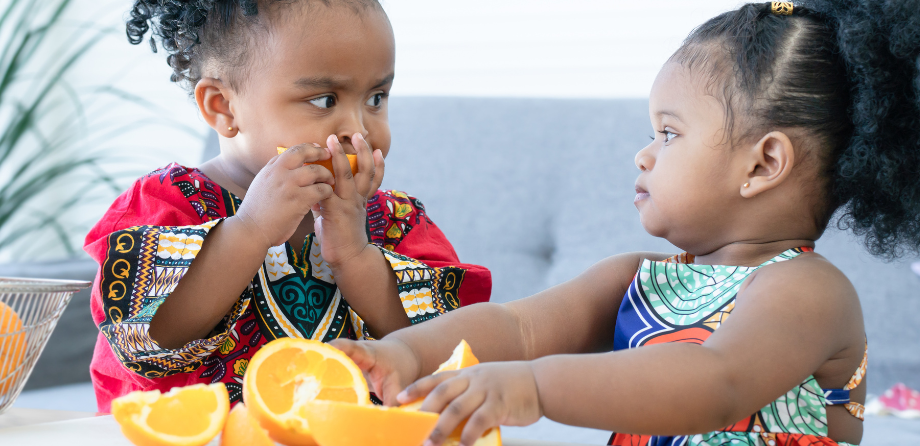
Early years activity: Rainbow Fruits of Africa
Black History Month is an opportunity to celebrate and value the rich cultures, traditions and contributions of Black heritage. Food is a wonderful way to explore diversity – it brings people together and helps children learn about different places and traditions.
South Africa, for example, is home to a wide variety of delicious fruits that thrive in its unique climate. By making a fruit salad with these fruits, children can experience new tastes, enjoy sharing food with friends and begin to understand that every country is unique.
Rainbow Fruits of Africa learning aims
- Developing social skills by sharing food, taking turns and talking about familiar foods from home
- Exploring fruits that grow in other countries and recognising that different places have unique foods
- Using descriptive vocabulary to talk about taste, texture and colour while exploring new fruits
- Strengthening fine motor skills through peeling, chopping and mixing fruit.
Resources you will need for this activity
- Map
- Selection of fruits from Africa such as passion fruit, kiwi fruit, nectarines, guava, avaocado, pomegranate, mango, apricots, banana, pineapple
- Chopping boards and child safe knifes
- Bowls.
Rainbow fruits of Africa activity outline
- Gather the children together and show them a world map in an atlas, on a poster or the internet. Show where the continent of Africa is and also where the UK is. Talk about the size and position of the courntires in relation to the equator. Discuss how being near the equator makes it a hot country where they can grow different fruits than in the UK. Talk about how some of these fruits are ones we eat regularly, like bananas, while others might be new to us. Explain that many of these fruits are transported from hot countries so that we can enjoy them here
- Introduce the fruits and ask the children which ones they already know and which they have tasted before. Give them time to explore the fruits with their senses – feeling the textures, noticing the colours, and smelling them. Highlight interesting features, for example, the spiky crown of a pineapple. Encourage the use of descriptive vocabulary such as spiky, smooth, rough, soft and shiny
- Wash hands together, talking about why good hygiene is important when preparing food
- Safely cut larger fruits such as melon or pineapple, showing the children what the inside looks like and prepare large slices for the children to cut into smaller pieces. Demonstrate peeling and cutting softer fruits, like bananas, for the children to prepare themselves
- Encourage the children to taste the fruits and share their opinions. Ask open-ended questions such as asking them to describe the taste, texture or smell
- Give each child a bowl and invite them to choose a selection of fruits to mix together into their own fruit salad. Support their independence by encouraging choices and decision-making
- Sit together to enjoy the fruit salads, talking about the different tastes, colours and textures. Give plenty of praise for trying new fruits.
How to extend this activity
- Share the story Handa’s Surprise with the children, drawing their attention to the different fruits and animals in the story. Invite the children to help act out the story taking on the roles of Handa, Akeyo and the animals.
Special Considerations
This activity involves tasting a variety of fruits. Please ensure you are aware of any allergies or dietary needs.
NDNA products to support you with this activity
Healthy Eating Factsheet.pdf – Factsheet
Disclaimer: Activities with children must always be risk assessed, including for allergies or choking. Children must always have adequate supervision. Resources and materials must always be appropriate for children’s age and stage of development.
- Activity
- MyNDNA
Similar Articles
Top tips: New year new energy - supporting your team

Early years activity: Cosy calm den


